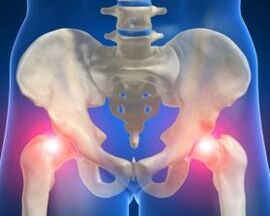
The osteoarthritis of the hip joint (CoksartRose) is a chronic, gradually progressive disease if there is no timely and proper treatment.This can lead to a complete loss of movement in IT.The end indicates that there is no inflammatory, but a degenerative process.
The symptoms of this disease differ depending on the stage.At the beginning, this is hardly noticeable complaints that occur during walking and physical exercises.Perhaps the manifestation in the form of weak pain in the thigh that goes alone.In this case, pain can be felt not only in the thigh, but also in the bar or in the knee.
As a rule, coxarthrosis is a process that has been undergoing for many years and is characterized by a gradual change in the cartilage, followed by a deformation of bones and the loss of common functionality.Most of the time, people affect people after 40 years, but very young patients are also found.
Causes
Why does arthrosis of the hip joint occur and what is it?The causes of coxarthrosis can be different, but the image of the disease is always the same.It all begins with changes in the articular cartilage, which is thinner and loses the property of the amortization of the loads.The body compensates for the stratification of the cartilage tissue by the formation of bone growth at the edge of the articular surfaces, which leads to a deformation of the joints and bones of different degrees.
The main causes of this joint disease:
- Injuries.This cause may not be a major lesion, but in many cases chronic microtraumas affect the development of the disease that contributes to cracking and thinning the cartilage.They also influence the fear of the joint capsule, which leads to the accumulation of many damage.Repeated microtraumas are often the forerunner of the occurrence of such a disease.
- Excessive loadsWhich leads to systematic microtrauma and joint injuries.In most cases, this can be found in people who do severe physical work or professional athletes.In this case, treatment without changing lifestyle or load restrictions is also ineffective and is often accompanied by relapses.
- Hereditary disposition.This includes abnormalities in the development of the thigh head itself, the underdevelopment of the common elements, etc.In this case, the so -called dysplastic arthrosis of the hip joint occurs.
- Diseases.For example, in the absence of proper treatment, arthritis can degenerate into osteoarthritis over time.This is due to the fact that the properties of changing the cartilage tissue occur during arthritis.Gradually this leads to the development of a degenerative process.
- Excess body weight.The excess body weight has a load on the joints even when walking, which exceeds its physiological strength limits.
Depending on the cause of the development of the disease and its pathogenesis, 2 main thermal arthrosis types of the hip joint are differentiated.
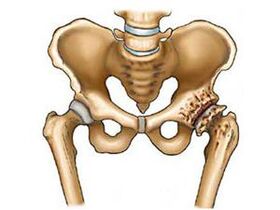
- Primary Coksartrose.In this case, the disease develops very slowly and begins with an impaired blood supply to tissues.The reasons for the development of this type of osteoarthritis are based on the violation of the metabolism, which is more characteristic for people over 50 years.The primary arthrosis of the hip joint is most frequently diagnosed.
- Secondary coksart.In this case, the disease develops against the background of the systemic inflammatory lesion of many joints in the body.Inflammation can be both contagious and autoimmune.
In the early stages of the coksart rose of patients, only slight pain or a feeling of symptoms in the joint area are concerned.Such signs are often ignored, with the disease progressing.
Symptoms of arthrosis of the hip joint
Coksart rose of the hip joint, the symptoms of which cannot be ignored, can lead to serious consequences.There are several basic signs of the disease that depend on the stage of the disease:
- The pain in the joint is the most obvious symptom through which one TBS disease can be assumed.The intensity and type of sensations usually depend on the stage.
- The limitation of the mobility of the limb is also a symptom for coxarthrosis.For the early stage, the feeling of the "restriction" of the connection, which runs after some load, is characteristic.
- A weakening of the hip muscles can already be observed in the second stage of the disease, which has achieved the third to complete the atrophy.
- Change the leg length due to the deformation of the pelvis is characteristic of "neglected" osteoarthritis.
- Lame or gear change is a very likely sign of bone deformation.
- A pronounced crunch in the joint is always a sign of osteoarthritis.Usually taken into account when there are other symptoms.
The main feature of coxarthrosis is the pain, its way, its duration, localization and intensity depends on the stage of the disease.
Osteoarthritis of the hip joint of the 1st degree
This stage of the disease is characterized by pain in the joint and thigh, sometimes in the knee, which occurs after physical activity and decreases after calm.The mobility of the joint is not limited and there are no gear injuries.
Coksartrose of the 1st degree is the initial stage of the disease by starting the treatment that you can still stop the process of destruction and deformation of the joint and can completely preserve its functions.Unfortunately, many do not consider it necessary to see a doctor due to the weak pain in the joint, and the disease is meanwhile.
Arthrosis of the hip joint 2 degrees
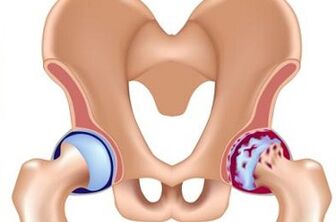
It manifests itself more clearly - the intensity of the pain grows not only after the load, but also in peace, there is a restriction of the motor functions.In particular, coksart rose is formed by difficulty in carrying out the pronation (rotation of the thigh inwards) and the kidnapping.
In an X -Ray examination we see a narrowing of the joint space and the appearance on the surfaces of bone growth.The swivel cavity and the thigh head are deformed.The muscles of the thigh on the side of the lesion begin with atrophy, and pain syndrome spreads below and captures both the knee joint and the groin area (it is important to understand that this is not accompanied by dystrophic changes in the Fnee joint).
Arthrosis of the hip joint 3 degrees
Signs of the disease are pronounced and constant.Pain syndrome overtakes at night.When walking, the patient uses support.The muscles of the lower leg and hips are gradually atrophy, and the sick leg of the sick person is getting very shorter.
Often the joint splitting disappears completely up to the 3. degree and the joints grow together into a single bone structure, which shows an image.As a result, a complete immobility of the joint occurs.
The X -rays determine extensive bone growth from the side of the roof of the swivel and the head of the femur, a sharp narrowing of the joint column.The thigh neck is significantly expanded and shortened.
Diagnosis
Before you find out how the arthrosis of the hip joint can be treated, it is necessary to make a diagnosis correctly.In the event of suspicion of the coksart rose, one person aims to carry out a biochemical blood test.In the presence of an illness, patients have a slight increase in ESR, globulins, immunoglobulins and serumukoid.
The next stage in the detection of osteoarthritis is an X -Ray photo.It is identified:
- Order cartilage,
- Bone growth on the limit of the cartilage,
- Narrowing of the distance between the joints,
- Bone tissue compression under the cartilage.
Unfortunately, an X -Ray photo does not allow the common capsule and the cartilage itself.If you need to receive information about this soft tissue, the patient is directed at tomography.
Treatment of the arthrosis of the hip joint
In diagnosed arthrosis of the hip joint, the treatment depends directly on the stage in which the disease is located.The general treatment scheme provides for the achievement of the following goals:
- Eliminate pain and symptoms in the area of painful joint;
- to produce the nutrition of the intra -karticular cartilage and to begin the process of restoration;
- eliminate the lack of intra -articular liquid;
- Activate microcirculation in joint tissues;
- Eliminate an increased load on the hip joint;
- Strengthen the muscles that surround, protect and maintain joints;
- Prevent deformation and increase mobility in the thigh joint.
All of this can only be achieved with the help of an integrated approach that should not only include drug therapy, but also a change in the lifestyle in order to remove risk factors for coxarthrosis.
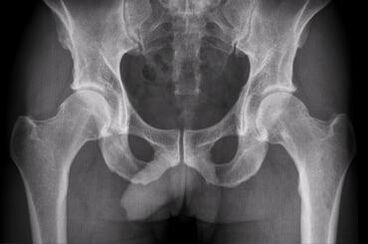
- In the third stage of the disease, the treatment includes an operation in which the joint is replaced by an endoprosthesis, while part of the prosthesis is detained in femoral and deals in the pools.The operation is very complicated, long in time and requires a long rehabilitation phase.
- Mit I und II -Arthrosegrad des Hüftgelenks erfolgt die Behandlung ohne chirurgische Intervention.Used: non -steroidal anti -inflammatory medication, muscle relaxants, chondroprotectors, vasodilating medication, hormonal steroid medication, local medicinal products, lotions, compresses.
All of these drugs are only prescribed by the doctor present.Some of them are effective in the form of injections directly into the affected joint region.Such injections can only be carried out by qualified medical staff.Therefore, self -finishing is not recommended strictly.
Not -drug methods
In addition to the use of medicines, doctors recommend non -displaced methods to combat the disease.This includes the following methods for the treatment of this disease:
- Physiotherapy;
- Massage;
- common breeding;
- Diet.
The physiotherapy used for arthrosis includes the following types of treatment:
- Magnetotherapy;
- UHF and ultrasonic therapy;
- Aeroion and electrotherapy;
- Inductothermia;
- Phototherapy;
- The use of laser technology.
All of these methods can only be used to improve blood supply to the joints and relieve cramps.
Pharmaceutical therapy
The combined treatment of hip arthrosis ensures the appointment of the following drug groups:
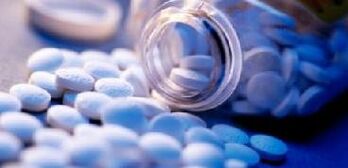
- Non -steroidal anti -inflammatory medicationThey all remove pain, relieve inflammatory processes, but do not restore cartilage tissue.
- Chondroprotectors.Preparations for the nutrition of cartilage tissue.Accelerate its restoration.Important in the 1.2 phase of the treatment of osteoarthritis.At 3 degrees illness, the cartilage is already destroyed, these medication will be useless.You have to take drugs for a long time and take a few courses.
- MusorelaxantsEliminate muscle cramps in the area of pain joints and contribute to improving the pleiling of the tissue.
- Ointments and creams.Therapeutic ointments should alleviate the condition of a sick person, but should not contribute to a complete recovery.Warming ointments are well suited.They irritate the skin's receptors and reduce pain syndrome due to this year.The heat ointments also work to restore increased blood circulation in tissues and muscles in the hospital.
- Injections of steroids into the joint cavityThe injections of these medicines are prescribed to relieve the deterioration of the disease and eliminate severe pain.
- Vasodilative medicationExpand the vessels in the joint cavity and nearby, which improves the delivery of nutrients that are required to restore tissues.
It is not necessary to rely on the treatment means with folk remedies.However, some healers recommend tincture from lemon, garlic or celery root to treat joints and bones.
Massage in the treatment of coxarthrosis
If the hip joint is deformed, treatment with massage provides good results.The massage for coxarthrosis is a very effective and useful method.It is desirable that the massage is carried out by a good specialist and as often as possible.
Its effect aims to improve blood circulation, strengthen the muscles, to remove painful cramp, swelling and muscle tension as well as an increase in the diastasis between articulations of the joint.
In the absence of a professional massage therapist, a massage can be carried out.The massage with osteoarthritis can be carried out both manually and various massage devices and even water jets (hydrocinotherapy).
gymnastics
The treatment of arthrosis of the hip joint with physical education is to perform two tasks: increase the mobility of the legs and prevent muscle atrophy.All standard -FK complexes for coksart rose also have a general strengthening of nature and a positive effect on the entire organism.
The complex of the gymnastics exercises is prescribed by a specialist.The first few medical physical education should take place under the supervision of a doctor.It will show how to carry out every movement correctly and also control the right load on the hip joints.
diet
Main recommendations:
- Prefer porridge on the water.
- Use a sufficient amount of animal protein: fish (except salty), poultry meat, beef.
- Use at least 5 portions of vegetables per day (one serving - 100 grams can be used as a side dish).
- Mandatory dairy products: cottage cheese, yogurt, fermented.
- Exclude alcohol, coffee, strong black tea.
- Exclude sweet flour.
- Eat a little, but often.
Diet reduces the load on the hip joints and offers you everything required for the restoration of tissues.




















